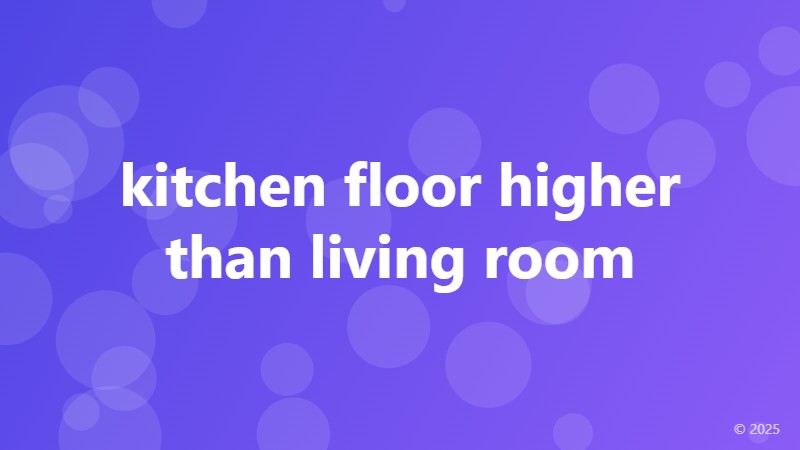kitchen floor higher than living room

Why a Kitchen Floor Higher than Living Room is a Game-Changer
When it comes to home design, one often overlooked aspect is the transition between the kitchen and living room. Traditionally, these two spaces are on the same level, but what if we told you that a kitchen floor higher than the living room could be a game-changer? In this article, we'll explore the benefits and design possibilities of this unique layout.
Benefits of a Raised Kitchen Floor
Raising the kitchen floor above the living room level can have several advantages. Firstly, it creates a clear visual distinction between the two spaces, defining the kitchen as a separate zone. This can be particularly useful in open-plan living areas where the kitchen and living room flow into each other. By creating a subtle elevation change, you can create a sense of separation without sacrificing the open feel.
Secondly, a raised kitchen floor can improve the overall aesthetic of the space. A slight elevation change can add visual interest and create a sense of drama, making the kitchen feel more like a focal point. Additionally, it can provide an opportunity to incorporate clever storage solutions, such as recessed cabinets or hidden appliances, beneath the raised floor.
Design Possibilities
One of the most exciting aspects of a kitchen floor higher than the living room is the design possibilities it presents. For instance, you could create a multi-level kitchen island that doubles as a breakfast bar or a casual dining area. This not only adds functionality but also creates a sense of flow between the kitchen and living room.
Alternatively, you could use the elevation change to create a cozy nook or reading area in the living room, perfect for curling up with a good book or enjoying a quiet moment. The possibilities are endless, and with a little creativity, you can turn this unique layout into a stunning design feature.
Practical Considerations
While a kitchen floor higher than the living room offers many benefits, there are some practical considerations to keep in mind. For example, you'll need to ensure that the transition between the two levels is safe and accessible. This might involve installing a gentle slope or a few steps to connect the two spaces.
Additionally, you'll need to consider the impact on the overall flow of your home. A raised kitchen floor can create a sense of separation, but it can also make the space feel smaller. Carefully balance the design elements to ensure that the raised floor enhances the overall feel of the space rather than detracting from it.
In conclusion, a kitchen floor higher than the living room can be a game-changing design move. By creating a subtle elevation change, you can add visual interest, improve functionality, and define the kitchen as a separate zone. With a little creativity and careful planning, this unique layout can become a stunning design feature that sets your home apart.